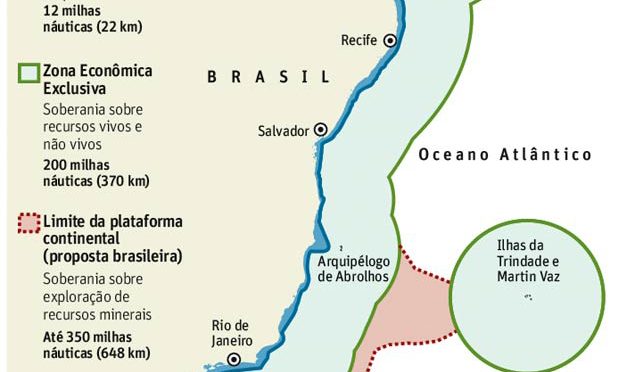With around 7.491 kilometers of coastline, Brazil has immense potential for some of the most modern renewable energy technologies: offshore wind power, which uses fixed or floating wind turbines installed offshore.
The country is among the highlights of a recent study on the subject, a product of the Administrative Assistance Program for the Energy Sector and the International Finance Corporation, the arm of the World Bank Group for the development of the private sector.
Major offshore wind energy developers come to present plans for several gigawatts of new offshore wind projects in Brazil.
| Estados | Extensão (km) | Percentual (%) |
|---|---|---|
| Bahia | 932 | 12,4 |
| Maranhão | 640 | 8,7 |
| Rio de Janeiro | 636 | 8,6 |
| Rio Grande do Sul | 623 | 8,5 |
| São Paulo | 622 | 8,5 |
| Amapá | 598 | 8,1 |
| Ceará | 573 | 7,8 |
| Pará | 562 | 7,6 |
| Santa Catarina | 531 | 7,2 |
| Rio Grande do Norte | 410 | 5,7 |
| Espírito Santo | 392 | 5,3 |
| Alagoas | 229 | 3,1 |
| Pernambuco | 187 | 2,5 |
| Sergipe | 163 | 2,2 |
| Paraíba | 117 | 1,6 |
| Paraná | 98 | 1,3 |
| Piauí | 66 | 0,9 |
| Total | 7.379 | 100 |
Equinor asked Brazil’s federal environmental agency, IBAMA, for permission to carry out an environmental impact assessment that “will examine the possibility of developing an offshore wind farm project” in the country’s waters.
The developer does not have detailed plans, but local media reports that the developer is developing a wind farm in a 4.66 GW area divided into two 2.33 GW fields called Aracatu 1 and Aracatu 2.
The wind power projects are located in the neighboring states of Rio de Janeiro and Espírito Santo, not in the southeast of the country.

